Dear Eduardo,
Yesterday crossing the Museumplein -the square behind the Rijksmuseum- I passed the ‘skating palace’ and I thought of your Zócalo pictures. I took some pictures and you see: also here young and old are enjoying the winter activities.
‘IJspret” it says on the billboards around the frozen pond covered with a tent, which means “Ice Fun”. It is around zero degrees at the moment, not cold enough for good ice, so they make the water freeze with a machine. The 17th century paintings on the billboards show, no matter rich or poor, we have been enjoying winter activities like these for ages. I must admit though: I never quite mastered the technique of skating. Must be the more southern blood on my mother’s side ![]()
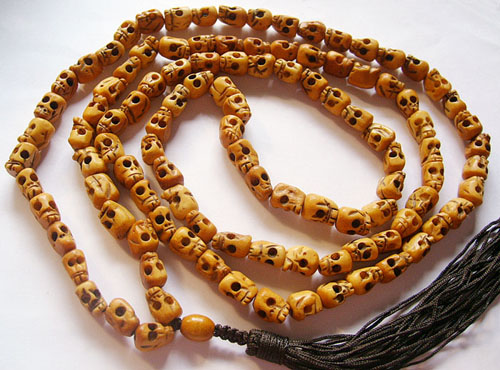
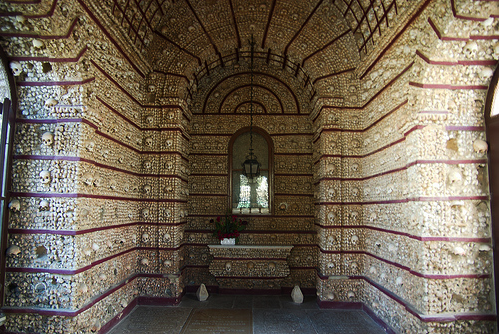
Thinking about skulls as a motif in art, design, jewellery I came up jewellery used in Tibetan Buddhism. There the mala, prayer necklace, can be made out of skull shaped beads carved from human bone. And in architecture: I remember visiting a Carmelite chapel in the south of Portugal, all walls and ceiling beautifully decorated with skulls and bones. And the more macabre Capuchin catacombs in Rome. The use of skulls as decoration isn’t exclusively Mexican on second thought. Also as a motif, as a pattern it is universal.

Started to make small skulls out of wax, I will make plaster moulds with. I need my Illustrator prints to get an idea about the sizes I have to make them in, in order to get the right curve in the necklace. Will make some photos of the wax models to send to you in the next posting. Take care, Peter
|
|
|
|
Hola Peter Otra vez después de una larga secuencia de correos para concretar Conozco a Jorge Manilla porque estuvimos en la misma escuela pero en diferente tiempo (EDA), platicamos ahí algunas veces y fue muy agradable. El trabajo en la estación del Metro fue realmente una buena experiencia con el Maestro Guillermo Ceniceros de quien aprendí mucho sobre el oficio de la pintura. Lleno de emociones como subir con la charola de los colores (similar a la que Siqueiros hacia para pintar con acrílicos) arriba en la torre de metal al lugar donde pintar, también la relación con el y los compañeros de trabajo. Tú tienes razón cuando dices que son imágenes muy familiares para mí, especialmente la de la Biblioteca Central porque trabajo en la UNAM. Paso junto a ella casi todos los días, y lo que me gusta mucho de este espacio es que esta construido sobre piedra volcánica emanada del volcán Xitli cerca de ahí. Toda la Ciudad de México esta llena de montañas volcánicas que emergieron hace mucho tiempo. Creo que fue muy acertado de Juan O’ gorman usar piedras naturales de diferentes colores colectadas alrededor del país para darle la forma al mural, también porque los colores así no cambian. El único color difícil de conseguir como piedra fue el azul y utilizo cristal coloreado azul, muy práctico construir bloque de 1 m x 1 m para cubrir las cuatro paredes ,4000m2 de todo el edifico Lo que me agrada mucho de O ‘gorman es esa loca pasión para hacer lo que sentía, obteniendo resultados muy acertados en todas las disciplinas que desarrollo. Un artista con mucha intuición. Peter me despido para pronto volverte a escribirte y completar algunas ideas. Cuídate Hi Peter. Again before a long sequence of concreting posts I know Jorge Manilla because we where in the same school but at different time, (EDA) we talk a few times there and it was very pleasant. The work on the metro station was a real good experience with the Master Guillermo Ceniceros from which I learn a lot about the craft of paint. Plenty of emotions like to climb with the colors on a dish (similar to the one Siqueiros made also to paint with acrylics) up on the metal tower getting at the place to paint, besides the relationship with him and with all the partners at work. You have the reason when you said are images very familiar to me, specially the one of the Central Library, because I work in UNAM, I pass near there almost every day, and what I like a lot of all this space is that was build upon the volcanic stone emanate from the Xitli volcano near there . All Mexico City is full of volcanic mountains that emerge up fare away one the time. I think it was very right of O’Gorman to use natural stones of different colors, collected around the Country to give the shape of the mural, also in this case the color don’t suffer any change. The only difficult color to find as stone was the blue and he use blue colored glass, very practical to cover the 4 walls with squares of 1m x 1m, 4000 m2 to fill all the building. What I like a lot of O’Gorman is the crazy passion to do what he feels, getting very right results in every subject he takes. He was an artist with a lot of intuition. Peter see you, and soon I´ll write to complete some ideas. Take care Hola Eduardo, This may mean that you still use the nearby Copilco station often. Where you worked at the paintings. I can imagine you and the others had to perform some acrobatic feats when balancing with your dish of paint on the scaffolding, now you describe this. :-0 Eeek! No Jackson-Pollock-s on the floor? I know Mexico is lying in the Ring of Fire that goes around the Pacific Ocean, one of the main two belts of active volcanoes on earth. About a week ago I saw an episode of a television documentary series, which is very interesting. In this series a ship with scientists, writers and artists aboard sails the same voyage as Darwin did aboard the Beagle two centuries ago. The clipper calls at every port the Beagle did during that 5 years journey around our globe that completely changed our view of the world. In the episode of last week the ship stopped in Valparaiso, Chile –also in this Ring of Fire- where Darwin experienced a heavy earthquake and where he made an expedition into the Andes. To discover stoned trees up the mountains and layers with fossils of organisms that once must have lived on ocean floor. And Darwin was struck by the rich diversity in colour of the stones he found during his trip in this volcanic area. The close-ups you sent me seem to fit to what I saw and heard in that program: the richness in colours of the stones used by O’Gorman that come from all over your quite volcanic country. (As kids we grew up with the funny Popocatepetl-song.) Also your photos seem to come at just the right moment. In this stage I am thinking about using colour in my work for WGA. I thought about using the colours of the slide I uploaded some time ago: the photo I took from the plane with the patches of the coloured houses. But seeing your photos I want to use the colours O’Gorman used, the colours of the soil. There is a connection between us humans and our soil. People who have died flown back to their countries of origin to get buried in home soil. A great thing of the UNAM building is, that it depicts your history in your own soil, and also the progression of science. Our changing views upon the word as we know it. Our universe. A few days ago I realized for the first time the common root of the words: universe, universal and university. The place where students and professors gather and examine our world. By using the same colours as O’Gorman did in the murals -stone by stone by stone-, I use Mexican colours, but at the same time natural colours in general. And that’s exactly what my necklace has to do: Mexican and also (part of the) universal. Eduardo, can I ask you a favour please? Would it be possible to make some more close up photos of the library murals? The slides I took myself ten years ago are not that close as the ones you sent me yesterday. I would like to have a better overview of the colours O’Gorman used. I hope you can do this for me. And note: if you need something I can get you here, let me know that as well please. I can send you the stuff you may need or make photographs for you, record something. Whatever you need! Here some photos I took this morning. It was snowing again. What’s wrong with winter? We’re not supposed to get that much snow here! Here the tracks of some birds: the ones of the home ground pigeon look like little airplanes on their routes. And note that heavy track in the left down corner of the second image: the biggest, most migratory bird of them all. Hi Eduardo, Hola Peter, aquí te mando más colores y gracias por preguntarme si necesito algo. Tu trabajo se ve muy bien, ese ritmo de elementos esféricos, pequeños cráneos en una forma circular.Suena muy apropiada la tecnología de cocina para conseguir esa textura cremosa, debe de ser muy emocionante vivir ese proceso. Mi trabajo en la UNAM es de maestro en el laboratorio de joyería junto con el maestro Andrés Fonseca dentro del CIDI, y es muy enriquecedora la interacción con los estudiantes y también con los otros maestros de este lugar. He comenzado mi pieza Decidí hacer un tubo de red tejida. Lo que pienso que es peculiar de esta clase de trabajo tejido es el ritmo monótono que se genera con los alambres y los espacios que dejan ver lo que esta del otro lado, dividiendo las formas en pequeño puntos como una pared óptica. El alambre de plata da un gris brilloso a lo que se ve del otro lado y hace plana o indefinida cualquier forma específica viendo a través de este. Quiero poner objetos dentro de este tubo con la posibilidad constante de cambiarlos como oportunidad de retransformar el objeto y establecer una interacción con el usuario. Creo que cada uno tiene sus propios especiales objetos significativos encontrados en el viaje hacia algún lugar en todo momento, y están cambiando. También los objetos de joyería contienen los significados que nosotros les damos, contenidos dentro de sus formas externas ,tal vez anodinas , percibidas a través de nuestros sentidos porque son objetos que nos acompañan en ese viaje. Otra vez me despido Peter, hasta pronto y buenos deseos en todos los procesos Hello Peter, here I send you more colors and thanks for ask me if I need something. Your work looks very well, that rhythm of spherical elements, small skulls in a circular form. Sounds very proper the kitchen technology to get that cream texture must be very moving to live that process. My work in UNAM is being teacher together with the teacher Andrés Fonseca in the jewelry laboratory of the CIDI, and is very enriching the interaction with the students and also with the other teacher in this place. I all ready start my work, I decide to make a weaving net tube. What I think is peculiar of this kind of network is the monotonous rhythm that is generated with the wires and spaces that lets look from one side to the other, dividing the form in small spots like an optic wall . The silver wire gives a gray shiny film to what is look on the other side and made flat or indefinite any peculiar form if you look through it. I want to put some objects inside with the constant possibility of change them, as an opportunity to retransform the object and establish an interaction with the user. I think that every one has there own special significant objects founded in the traveling to some place in the time, and there are changing. Also the jewelry objects have the significant that we give them contained within there maybe anodynes external forms,, perceived through our senses because they go together with us in that travel. Peter, till soon again, and good wishes in every process. Hi Eduardo,
Chose for this collar, with four rows.
- - - Here the poured skulls for the ceremonial collar
- - - - - - Also have been pouring for the other necklaces. At the moment the kiln is doing a test firing for
Me gusta como se ven los cráneos de diferentes tamaños, sobre todo al cambiar en cada círculo del collar, yo creo que va muy bien tu pieza. Te mando también más imágenes de mi trabajo, es un proceso Minucioso y de mucha paciencia pero va con buen ritmo. Tuve una idea que se ajusta bien al último planteamiento y me gusta que este enlazado a los coches en el tránsito de esta ciudad. Decidí colocar sobre esta superficie tramada, series de broches (pins) cuyas formas son coches de diferentes tamaños y ángulos en relación a su trayectoria dentro del tránsito y la forma del tubo tramado Así en el lado exterior del tubo tejido estarán ubicados pequeños autos de diferentes tamaños acercándose o alejándose sobre esta superficie ritmada traslucida, límite permeable ,tripa metálica y por el interior de este tejido tubular existirá la posibilidad de conservar algunos objetos significativos de los acontecimientos que le sigan dando vida individual a ese collar. Este es un tubo construido con anterioridad y su trama es paralela al ancho y largo del tubo. El tubo que ahora construyo presenta una trama inclinada a 45º grados en relación al largo y ancho del tubo Peter, buen desarrollo para todo lo que sigue y que estés muy bien. I like how the skull of different size looks, especially at the change of every round of the necklace. I think it goes very well your work. I send you more images of my work, is a very meticulous and need a lot of patience, but goes in a good rhythm I have an idea that is well adjusted to the last set up of my object, I like that will be linked to the cars in the travel of this city. I decide to put upon this weaving surface, series of brooches with the form of cars in different size and angles related to there trajectory within the travel en the form of the weaving tube. So then on the exterior side of this tube above this rhythm translucent surface, permeable limit, metallic gut ,will be small cars of different size placed, getting closer or moving away. And inside, will exist the possibility to keep some significant objects of the happenings that continue giving life to this individual necklace. This is a tube made before and there weaving direction is parallel with the long and wide of the tube The tube that I construct now presents a weave direction 45º degree in relation with the long and wide of the tube Peter, good develop for all the next and by very well. Eduardo, wow, your photos impress me! Wonderful! Very surprising this long tube. And I immediately see the resemblance with a gut. The gut also makes things travel to a destination. I see how meticulous the work must be and how you must have thought it over a lot before being able to start this large project. It takes a lot of patience. There is a nice Indonesian proverb about guts which means that you have to have patience: -harus panjang usus-: literally: -you have to have long guts-. So very applicable to this work you are making!
Success and good progress in your work as well. It looks very nice already, curious what you will add to it. Enjoy the weekend and see you soon again, Peter Hola Eduardo,
Aloha Eduardo,
How are you doing? Success, Peter
All heads are glazed now and ready to go into the kiln for the second firing. Here the skulls for the collar.
Will give the first half of the skulls their final firing tomorrow. The decals have to dry the night over. Are you succeeding with your plans?
A de ser emocionante organizar ese número de figuras y a cada una realizarle más aplicaciones, cada cráneo representa un número de acciones repetitivas , me gustan esa clase de procesos porque dan un boceto de los comienzos de la industria, también con ellos es agradable ver antes la secuencia, organizar, reducir tiempo, darle mas calidad a los objetos. Esto puede ser como una tipo de magia. Porque luego surgen soluciones progresivas En las fotos puedo ver puntos obscuros en cada cráneo supongo que será por donde se unan para formar el collar Se ven con otro sentido, en ese tamaño todos juntos, como en una instalación a otra escala En relación a la porcelana que utilizas en algunas de las piezas de las diferentes series en tu pagina, Imagino que puede ser muy evocativo revivir en algún sentido el proceso de la fabricación de objetos con este material tan significativo en la historia de Europa, su redescubrimiento y producción en determinada época, el intercambio de los objetos utilizados en Europa y reproducidos en porcelana por Oriente me recuerda un momento intenso de interacción entre ambas regiones. Creo que ese período fue extremadamente importante para Europa porque en este momento fue posible hacer una industria para también reproducir el material y los objetos que eran tan deseados. La alquimia comenzó a ser apropiada para esos problemas específicos Aquí te mando mas fotos de cómo ha ido el proceso Peter, el tejido quedo bien. Hay algunas texturas de cuando el objeto no ha sido concluido que son muy fuerte o expresivas, en este caso las fotos están bien para recordarlas y pensar en nuevos procesos futuros que las rescaten. También saque algunas fotos en un lugar indicado de tal forma que el tránsito presentara una inclinación semejante al trayecto de este sobre el collar En esta semana aparecieron diferentes apreciaciones en relación al tejido para tener la optima resolución . No se si estará bien poner los coches encima de este , pues se transforma en otra cosa . En relación a lo de las tripas, Aquí también es común un refrán que dice: “hacer de tripas corazón” y se refiere a realizar un gran esfuerzo para enfrentar un obstáculo, un gran esfuerzo y disimular el miedo sobreponiéndose. Enfrentarse también a una situación desagradable o algo que no nos apetece nada hacer ,pero que no tenemos mas remedio que hacer. Peter que estés muy bien en muy breve te mando mas correos saludos
Must be exiting to organize that number of figures and to realize more applications on each one, every skull represent a number of repetitive actions, I like that kind of process because they give a sketch of the beginning of an industry, also with them is pleasant to watch before the sequence, organize, reduce time, give more quality to the objects. This could be a kind of magic, because then it emerge progressive solutions In the photos I could see a dark spot on each skull and I supposed will be to joint all the skulls form the necklace. They look in other sense, in that size all together like in an invert scale installation. In relation of the porcelain you use in some of the objects of your series in your web page, I imagine could be very evocative to revive in a way the process of making object with that material so signifying in the history of Europe, his rediscovery and production in an specific period, the exchange of the objects use by the European people reproduced in porcelain by Orient remain me intense moment of interaction between both regions. I think that period was extremely important for Europe because in this moment was possible to make an industry ,to also reproduce that material and objects that were so wished, the alchemy began to be suitable in that specific problems Here I send you more photos of how was going the process Peter,
the weaving was right, there are some textures that when the object is not concluded are very strong or expressive , In this case the photos are all right to rescue them and think in new process for nexts objets in the future. Also I take some photos in a right place, so that the transit presents a similar inclination to the way of this on the necklace
In this week appear different appreciations with this weaving for get the optima resolution and I don’t now if it will be right to put the car upon the weave because the weave change to another thing In relation with the guts here we have also a saying that goes: “To made from guts heart” And recount that: when you have to make a great effort to confront an obstacle, a great effort hiding the fear and going forward, also when you have to do something unpleasant or that you dislike but there is not other way. Peter be allrigth an in soon I´ll send you more posts Dear Eduardo, I like the new photos you sent of your weaved tube. I like the connection with the weaved fabric. Also I think your decision not to have the rhythm of the weaved wires interrupted by elements put on the tube is a good one. What keeps me curious about your next steps. And very right: it is a kind of magic, many of our creative processes just are irrational. And about your remark to make photos of the in between steps is a very good way to store moments where you had to make a decision to go this way or to go that way. I do the same. These moments are stored till there is time and space to work on something new and to start following that other path you had to leave in favour of that other direction. But that’s also worth exploring. Making digital photos is perfect for that, a method I use too. I am glad the boring part of applying the decals has been done and now the real fun part starts here. So no more hearts out of guts like a week ago
Will keep you posted about the last steps these days. And looking forward seeing your final steps.
Knotting goes quickly. Here at the end of the strand. The skulls are the size of large pearls, so it looks quite elegant and bold at the same time. And they’re long: about the same length as a rosary. |
|
|
Copyright © 2025 Otro Diseño | RSS |
|
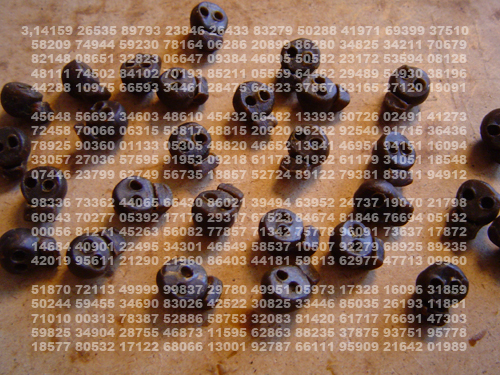
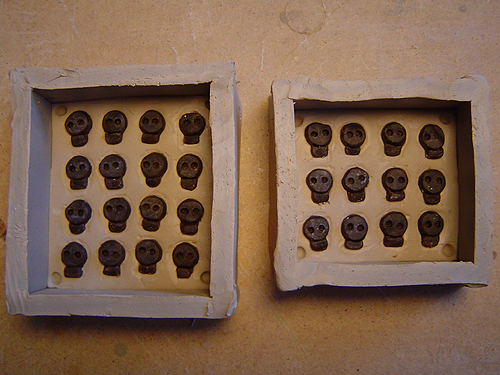
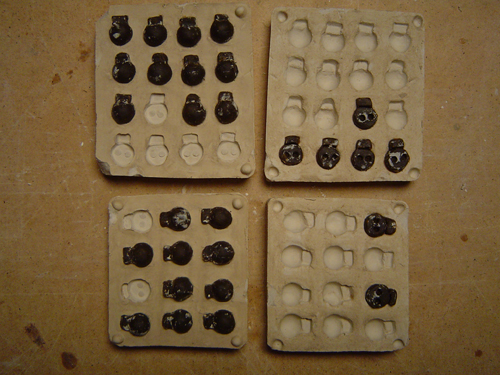
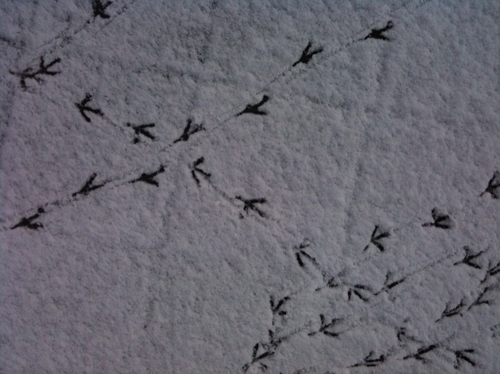
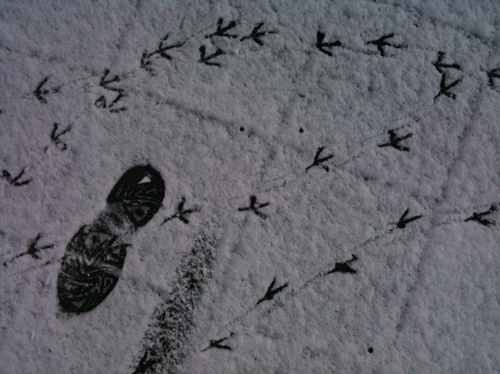


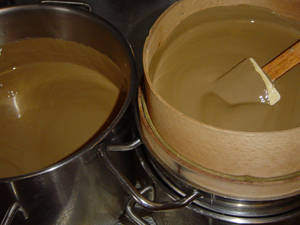
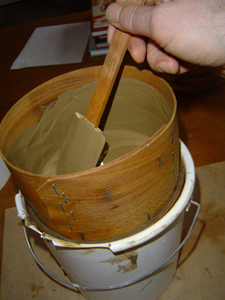
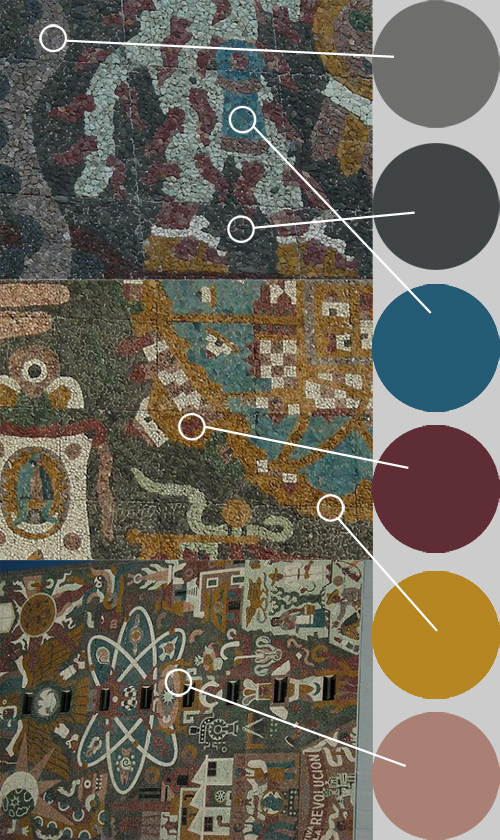

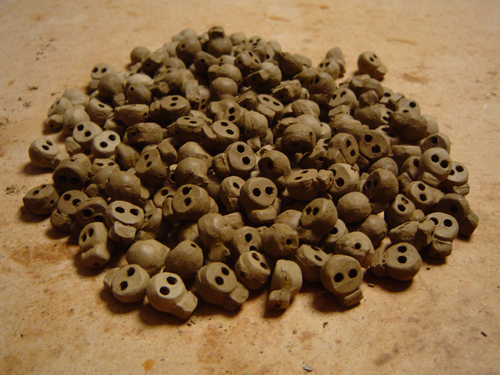
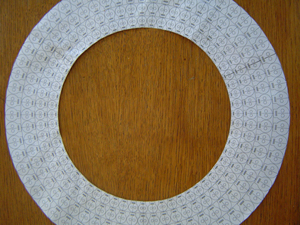
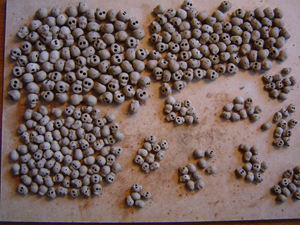 -
-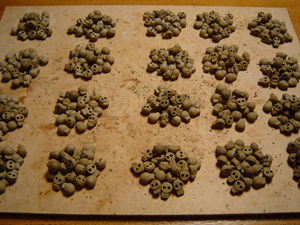
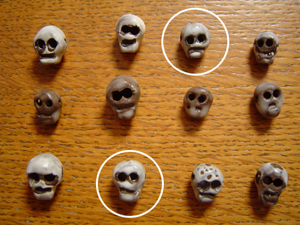

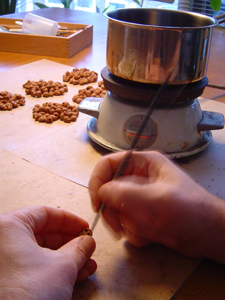
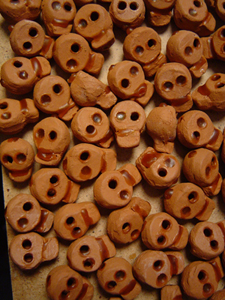 -
-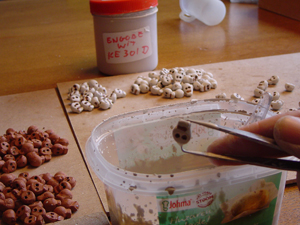 -
-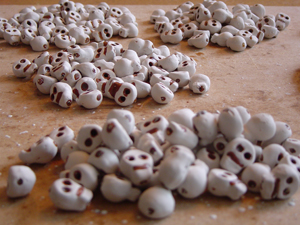 -
- -
-
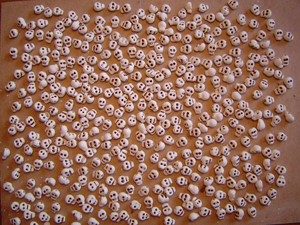
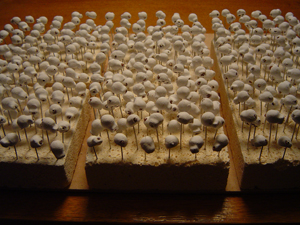 -
-

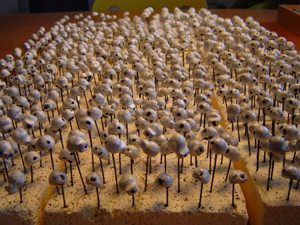 -
-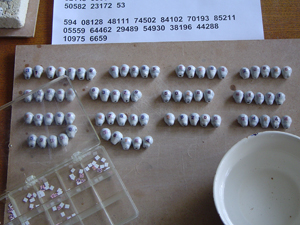
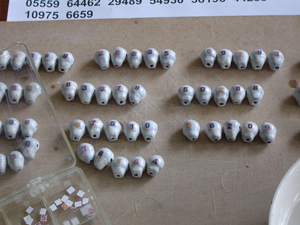 -
-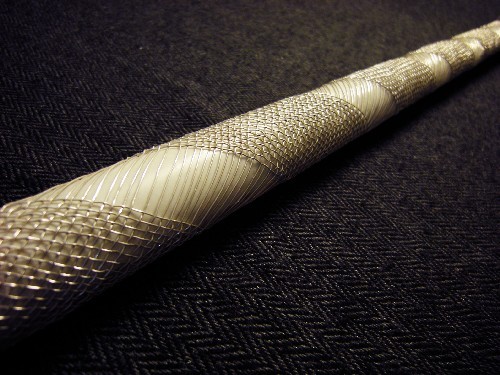
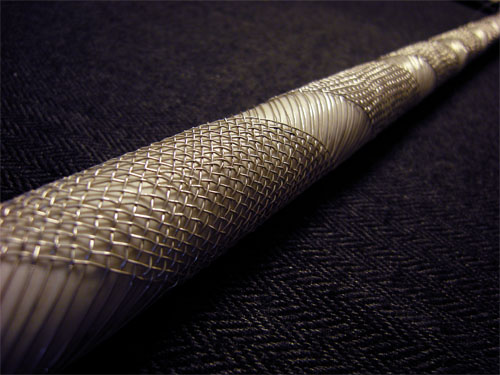
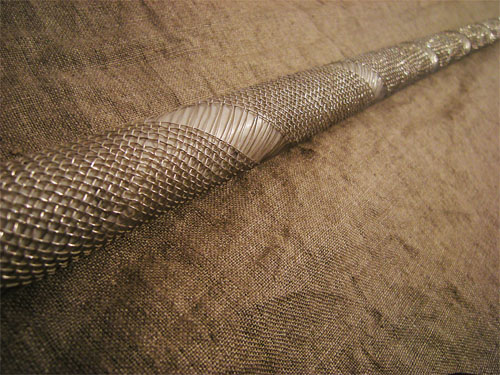
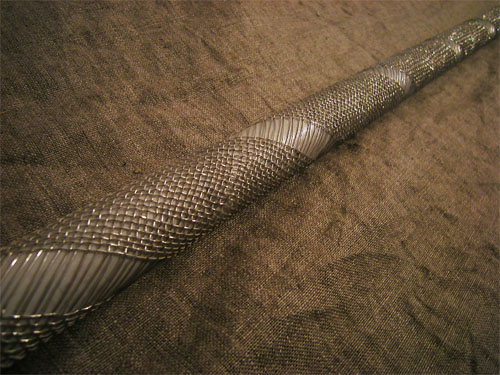
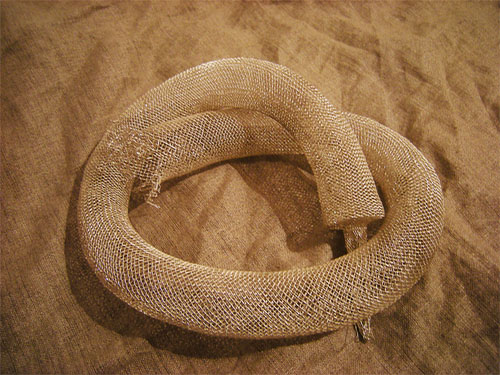
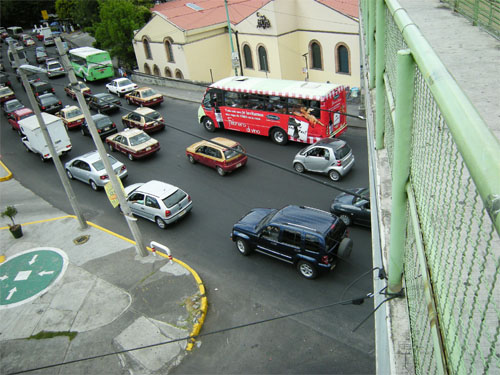
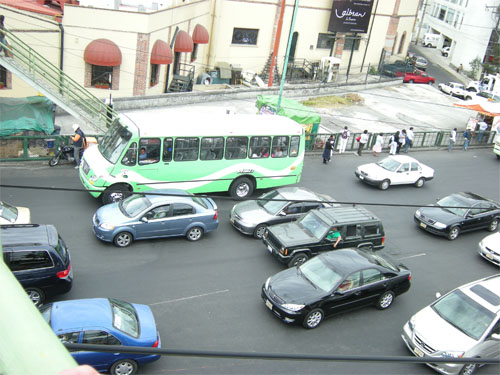
 -
- -
-

